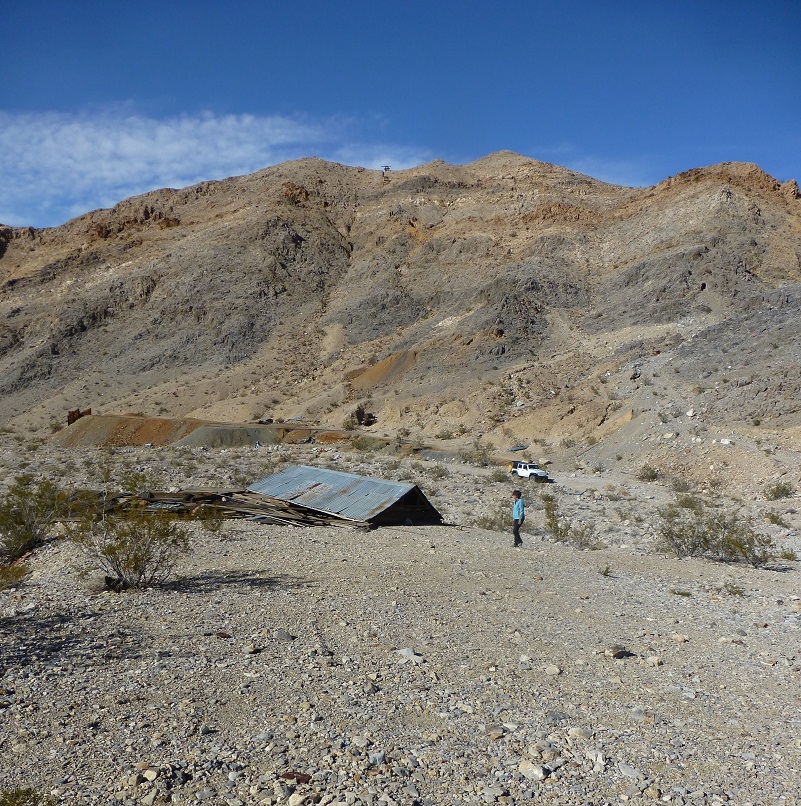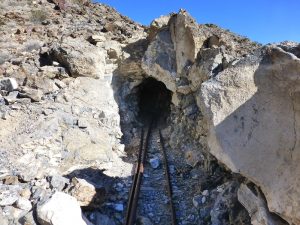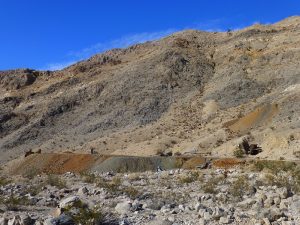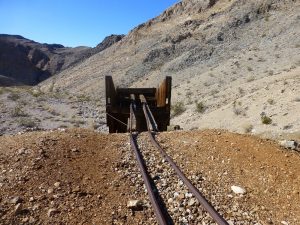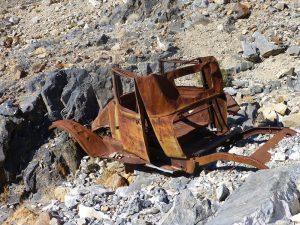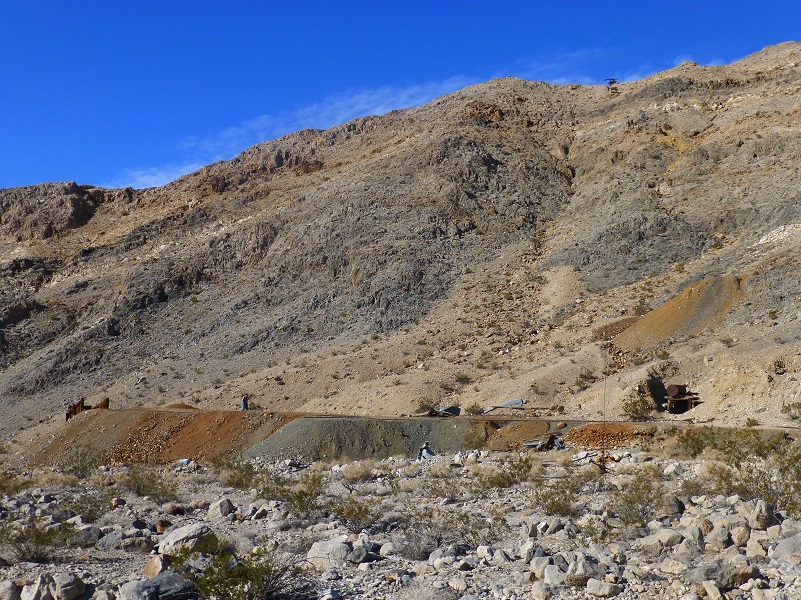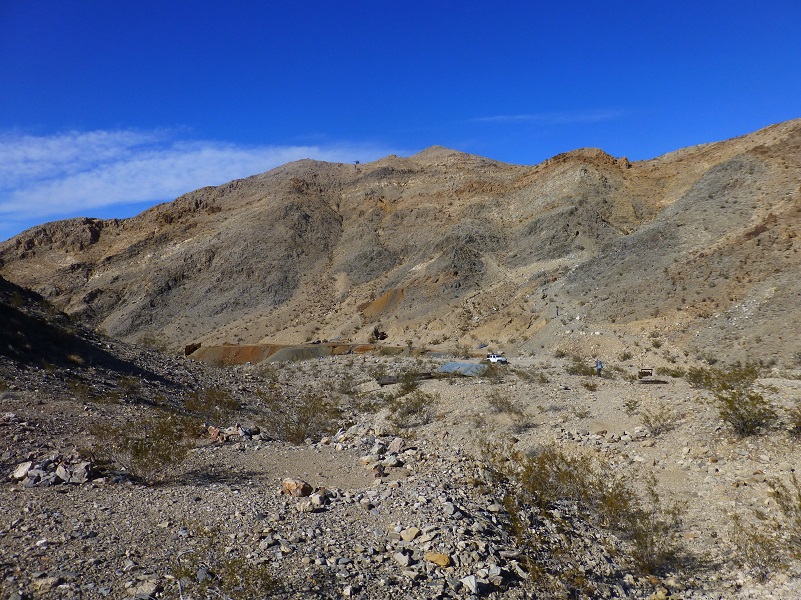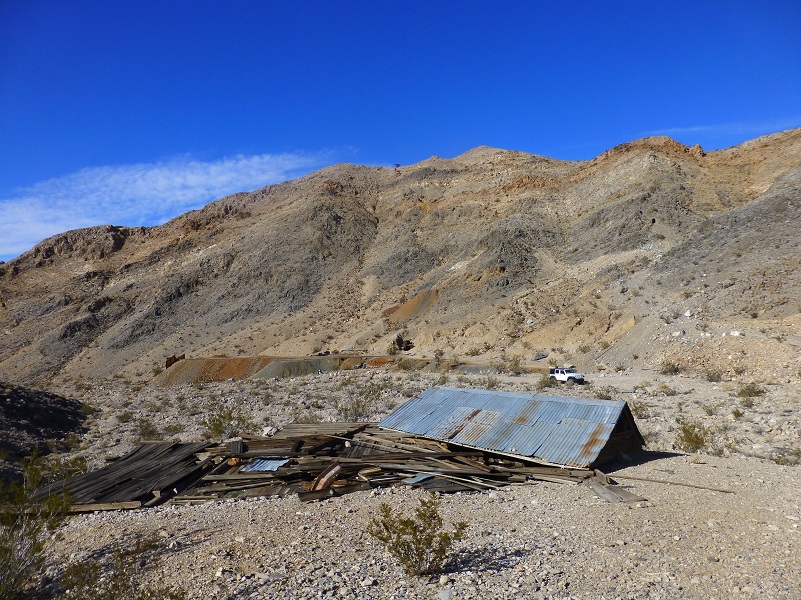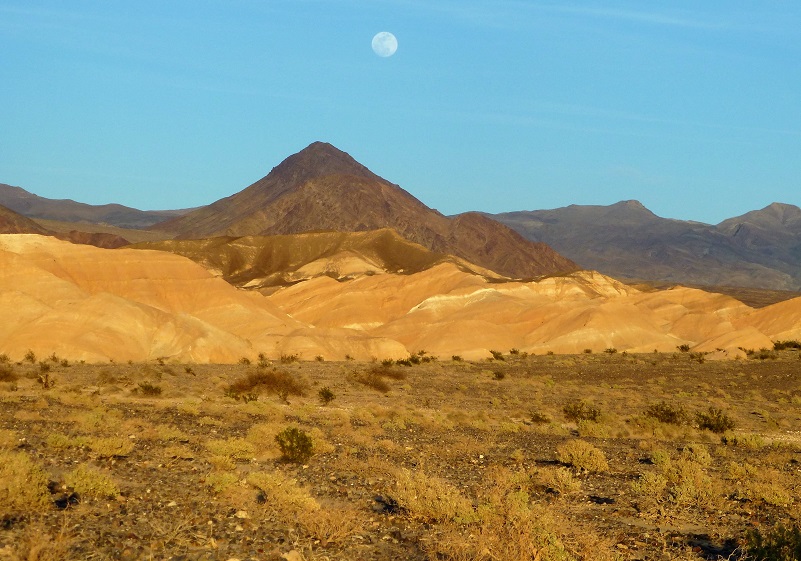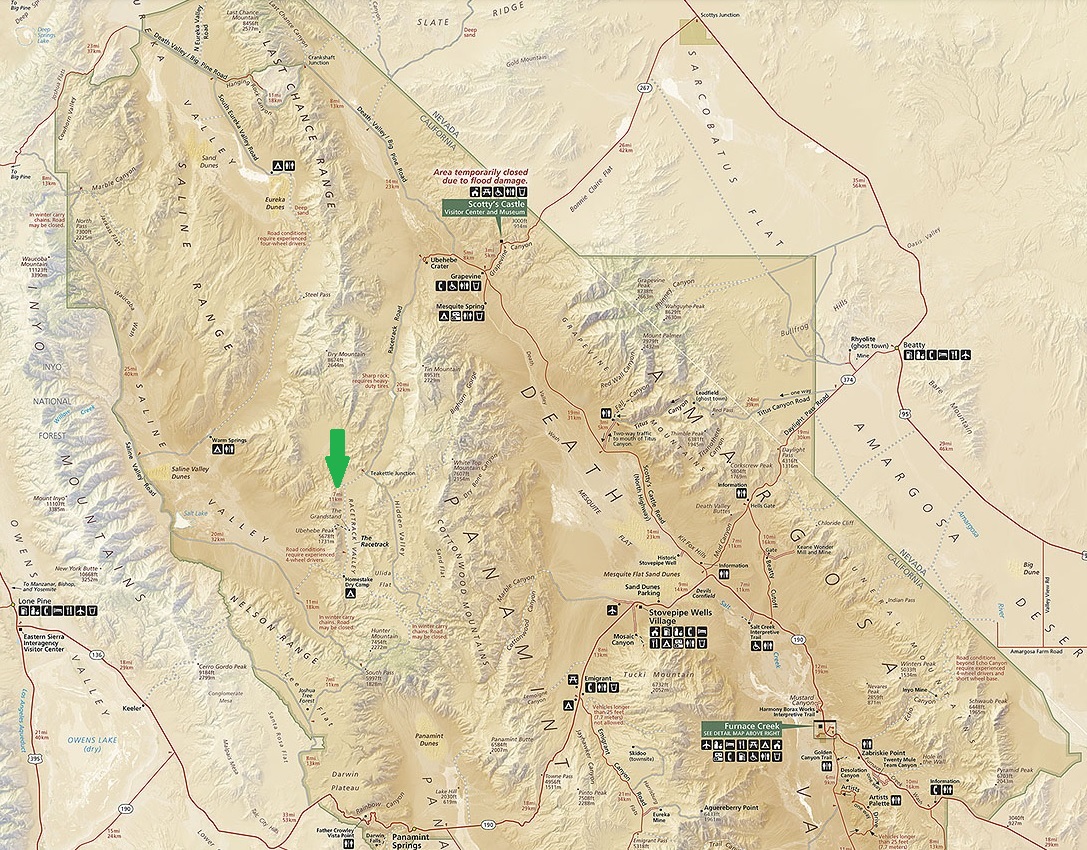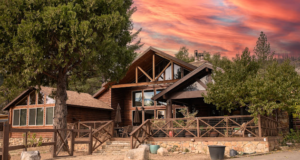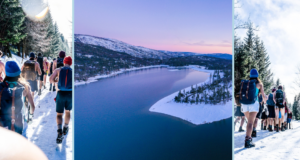Imagine a copper strike in the middle of nowhere, so huge that it warranted building a railroad 60 miles long to it to haul all of the bounty out. It could even be the Lost Spanish Mine! With other people’s money, imagine what could be accomplished!
Where: Death Valley National Park
Date: February 28, 2018
We visited many places on our recent trip to Death Valley. Wild Rose Charcoal Kilns, Mesquite Dunes, Badwater Basin, Harmony Borax Works, Artists Palette, Ubehebe Crater and the Racetrack were the highlights. Renting a jeep from Farabee Jeep Rentals for a day gave us the wheels to do a little 4 wheel driving up to an abandoned mine called the Ubehebe Mine. On the way back from the Racetrack, we took a short spur road for a little less than a mile up to the head of a canyon full of mines, structures and old junk.
The Ubehebe Mine was discovered back in 1875 but there was little or no mining at the time, even though some of the surface ore was said to contain as much as 67% copper by weight. The area was too remote to support low-profit copper mining. The electrification of the US in the late 1890s caused the price of copper to climb and by 1906, copper was in great demand. The mine was bought by Jack Salsberry, who was also involved in some of the Greenwater copper promotions and still later had Salsberry Pass named after him while he operated the Cabonate Mine in southern Death Valley. He founded nearby Salina City, built the road from Ubehebe Crater, purchased coal options for his proposed smelter at Bonnie Claire, Nevada and arranged financial bonds for the construction of the Bonnie Claire & Ubehebe Railroad.
Several mines were located in the area and we checked them out.
We could still see the cable tramline that they had brought material down and dumped it on a landing to be hauled away.
We wandered around, looking at old mining stuff.
We even found the remains of an old car.
Miners had utilized this collapsed building while they worked the mines.
As I walked around, I couldn’t help but wonder what type of person would do this much work on this mining project.
The Death Valley Journal shared the following about the man behind the mine plus much more.
Jack Salsberry was involved in promoting mining ventures in the Death Valley territory for twenty years, starting with the Greenwater copper frenzy of the Greenwater Valley in 1906, and ending with the Leadfield lead frenzy in Titus Canyon. Jack was a Tonopah lumberman and promoter who loaned money to Arthur Kunze so that copper exploration could expand in the Greenwater Valley. Through these first foundational efforts, a rush began in 1906, and within the first month, nearly one thousand men were gathered, looking for copper. Jack and partners bought into this get-rich-quick fiasco, promoting for all they were worth. His towns were growing so fast that he could not haul in lumber quickly enough to satisfy the building demand for businesses like restaurants, barber shops, general stores, assay offices, and banks.
Jack, seeing what was possible with other people’s money at Greenwater primarily through promotional efforts, jumped right in to another venture called the Ubehebe Mining Company many miles away north and west, near The Racetrack dry lake. He called this new copper strike so immense that he planned to build a railroad to it, playing on the Greenwater popularity. Of course, a railroad would have to be laid over sixty miles of Death Valley to access the Las Vegas and Tonopah Line in Nevada, so unless the copper find was authentic, it surely would not be built. But Jack was skilled in generating extreme interest and high stakes.
In May 1907, with Greenwater failing fast, Jack sold out and concentrated on Ubehebe (supposedly the Lost Spanish Mine of legend), which itself faded away the following year. Taking his easy earnings with him, Jack then became involved in lead near Galena Canyon, during the first world war when lead prices were skyrocketing. He built a road east from the mining activity, across the southern end of Death Valley, over what is now called Salsberry Pass, and to the Tonopah and Tidewater Railroad forty miles away. This venture, unlike the previous two, was legitimate, continuing through the war and Great Depression.
Ultimately, Jack became involved with Charles Julian at Leadfield, which turned out to be yet another fleecing of the innocents, and when Julian attempted to also dupe Salsberry, litigation followed … ya’ just don’t mess with Jack, Charles! It was a mess. But through it all, Jack earned himself a place in the legendary history of the Death Valley country.
But could I learn a little more about Jack Salsberry? I did a little research and his name was actually John Salsberry, born May 8, 1872 in Ohio. He was married to a lady named Helene Mabel, born July 27, 1879 Oregon. I put a little timeline together with what I discovered about his life.
1898: Living in Tuolumne County, CA
1900: Living in Burke Precinct, Shoshone, Idaho Miner Ore
About 1903: married Helene Mabel
1910: Living in Reno Ward 1, Washoe, Nevada Lumber, Married 7 years
1920: Living in Goldfield, Esmeralda, Nevada Cattleman Ranch
1930: Living in San Francisco, San Francisco Operator Steam, Mine
1932-33: California Voter Registration San Francisco
1935: Census shows that he was living in the same house as he was in 1930 in San Francisco
1934-36, 38-40: California Voter Registration Kern County
1940: Living in Kern County, California Mining Engineer gold mine, high school education 4th year
1942-44: California Voter Registration Kern County
June 8, 1943: John Salsberry died Kern County, California
September 15, 1966: Helene Mabel Salsberry died Bakersfield, Kern County, California.
Jack Salsberry must have been quite an interesting and unique person. What a life he led and I wish I understand more about what drove him to have the visions that he did of mining, transporting that product to markets in what looks like the middle of nowhere today. But there is a beauty to this country and if you look close enough, it isn’t as barren as it looks and you can spot footprints of early settlers if you look close enough.
It was a long day of adventure for us and as we headed back to Furnace Creek to return the jeep, we spotted the full moon rising over the colorful hills.
Map:
Sources:
Digonnet, Michel, Hiking Death Valley: A Guide to its Natural Wonders and Mining Past, Second Edition, March 2016
Jack Salsberry Death Valley Journal
Death Valley INVENTORY OF HISTORICAL RESOURCES THE WEST SIDE Ubehebe Mining District
Death Valley National Park Home Page
Death Valley National Park Hiking
Prior Blogs in this Area:
Escape to Death Valley: The Racetrack February 28, 2018
Escape to Death Valley: Salt Creek Pupfish March 19, 2017
Escape to Death Valley: Mesquite Sand Dunes March 5, 2017


